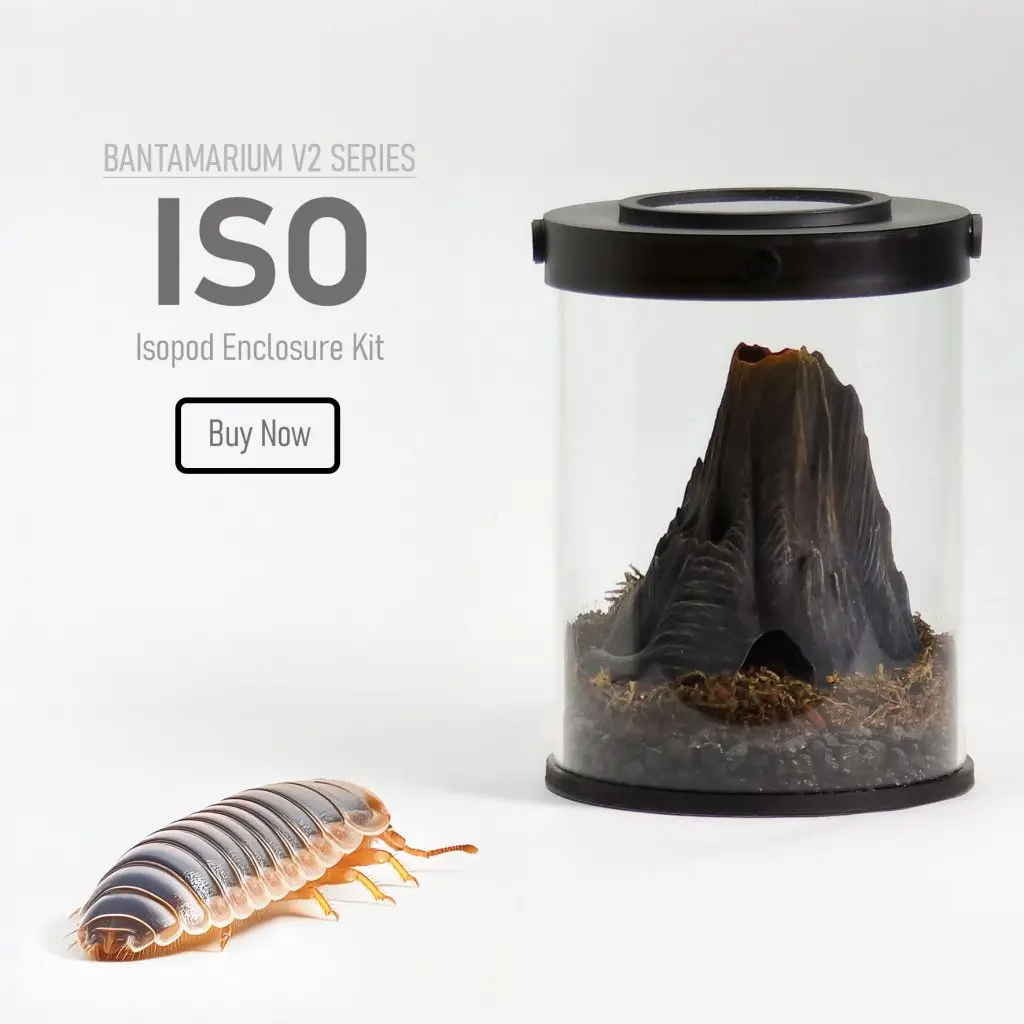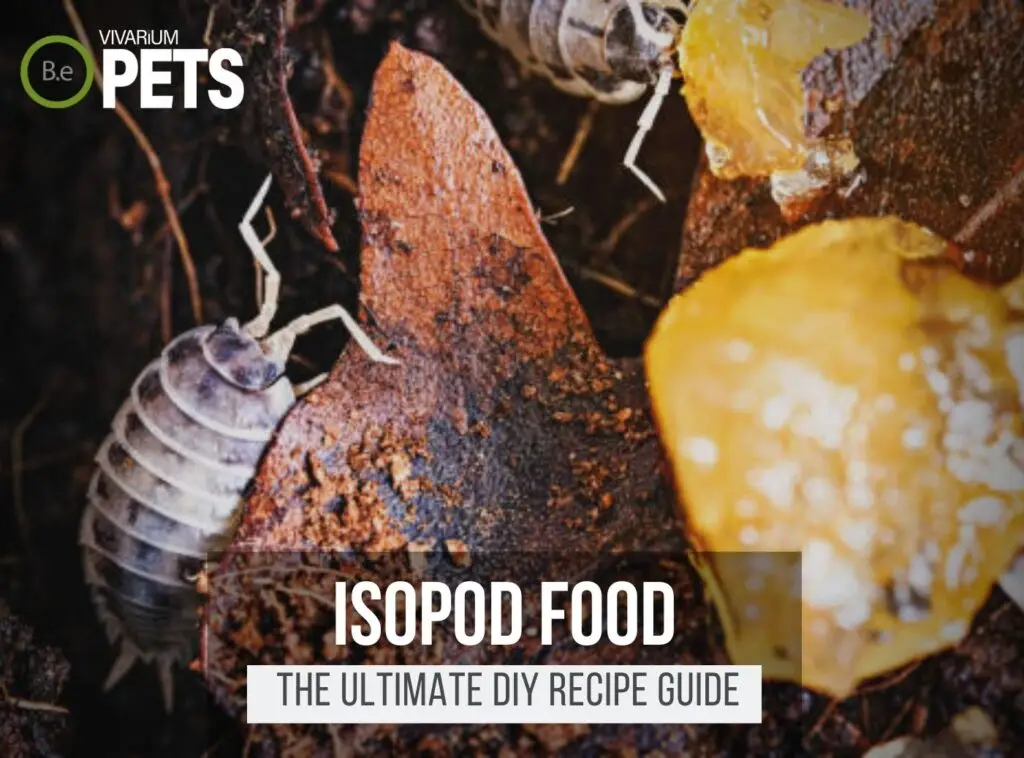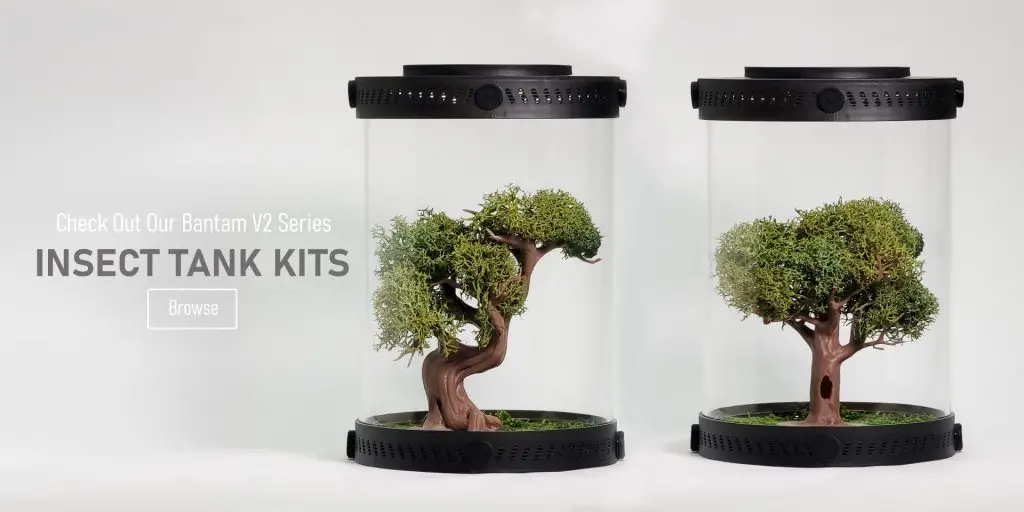If you’re looking for an entertaining, low-maintenance pet that is sure to bring endless amounts of joy, Clown Isopods, also known as Armadillidium Klugii, are the perfect pet companions.
With bright colors and interesting behaviors, Armadillidium Klugii is a unique species of crustacean that can bring hours of enjoyment to its caretaker.
This article’ll provide a comprehensive guide to Clown Isopod care, including tips on habitat, diet, and health.
Keep reading to learn all you need to know about caring for these charismatic isopods!
| Characteristics: | |
|---|---|
| Common Name | Clown Isopods |
| Family Name | Armadillidae |
| Scientific Name | Armadillidium klugii |
| Use | Cleaning, Aerating Soil, Feeders |
| Temperament | Non-aggressive |
| Lifespan | 1-3 Years |
| Diet | Omnivore |
| Adult Size | 1.5-2.2 cm |
| Breeding Type | Egg Layer |
| Care Level | Easy |
| Minimum Tank Size | 2-5 Gallons |
| pH | 6.5-7.0 |
| Hardness | Soft |
| Temperature | 69-77°F |
Table Of Contents:
ToggleWhat Are Clown Isopods?
Armadillidium Klugii is a member of the family Armadillidae, commonly called Clown Isopods due to the flamboyant coloring of their exoskeleton.
Two popular mutations of Clown Isopods are Armadillidium klugii ‘Dubrovnik’ and Armadillidium klugii ‘Montenegro’ which are scientifically named after the two countries these crustaceans are thought to have originated from.
This species of isopod is the ideal pet for any beginner, requiring minimal care while providing hours of entertainment!
Create an ideal habitat for your Clown Isopods with our Customizable Isopod Terrarium Kits, which include everything you need to get started.
What Do Clown Isopods Look Like?
Clown Isopods are an arthropod species that are widely recognized for their bright coloration and signature clown-like patterns.
They measure approximately 0.5 inches in length and come in a variety of colors and patterns yellow, orange, pink, blue, and white.
Armadillidium klugii exhibit segmented bodies, which are split into up to 8 sections, with each body part composed of multiple hard plates.
They have 7 sets of legs, two prominent antennae, and two large mandibles. They also possess two projections from their abdomen, which are often mistaken for antennae.
These projections are called uropods and are used for walking and “strumming” the substrate. This behavior helps Clown Isopods detect food and communicate with one another.
Benefits Of Using Clown Isopods
Adding Clown Isopods to your vivarium is an excellent way to maintain cleaner, healthier, and more interesting ecosystems.
Armadillidium klugii is intrinsically beneficial for enclosures, as they are superior waste managers thanks to their affinity for scavenging.
Their natural diet consists of decomposing and decaying matter, recycling waste materials, and breaking them down into nutrients for many types of terrariums.
This improves the overall health of the tank and keeps the environment balanced.
Furthermore, unlike other invertebrates, Clown Isopods are not typically considered pests and they do not carry the risk of introducing diseases or other organisms into the vivarium.
As such, they can provide critical maintenance and cleaning services without having any negative impact on the overall environment of the miniature ecosystem.


Clown Isopod Facts
Clown Isopods are a unique species of terrestrial isopods, found primarily in the humid environments of the Balkan Peninsula, and ranging from yellow to orange in color.
They are detrivores that can live up to three years with the right care and can be bred with attention to temperature and humidity.
Habitat
Armadillidium Klugii originates from the Balkan region and can be found scavenging throughout many parts of southeast Europe.
While they are incredibly adaptable creatures, they tend to inhabit dark, moist environments with plenty of loose leaf litter or other such substrates to hide in.
Replicate their natural habitat perfectly with our Bioactive Isopod Substrate Blend, designed to provide the ideal moisture and organic content for your isopods.
Diet
In their natural habitat, Clown Isopods are scavengers who mainly feed on decaying plant materials.
These curious crustaceans will also search for food at night and will happily eat a variety of small decaying invertebrates, such as caterpillars, spiders, and other insects.
Temperament
Clown Isopods may appear intimidating at first glance, but these crustaceans are quite docile when handling.
They can be handled and interacted with without posing any danger to humans or other animals.
When touched gently, Armadillidium klugii may even display signs of pleasure, such as curling their tails in contentment.
Despite this, it’s important to note that Clown Isopods can be sensitive creatures and are easily disturbed, so it is best to observe their behavior from a distance.
When kept in habitats shared with other animals, these isopods typically mind their own business and do not interfere with their cohabitants.
Additionally, since Clown Isopods are nocturnal, they are more active when the lights are off, so it is best to observe them during the evening.
Lifespan
Armadillidium Klugii has a relatively short lifespan compared to other invertebrates. Depending on the environment, they can live up to one to three years in captivity.
Despite their shorter life cycle, they have very interesting and complex life cycles, making them fascinating creatures to observe.
At birth, these tiny crustaceans, molt for the first time and gradually grow over time.
As mature adults, Clown Isopods will continue to molt, gradually changing color and size.
Once their molt cycle is complete, the crustacean will reproduce, and this process produces between five and eight eggs.
Females have specialized organs for nourishing their young, and these eggs usually hatch in about three weeks.
Breeding
To reproduce, a breeding pair of male and female Clown Isopods will typically form a “mating cycle” or a “tandem bridge”, where the male and female link their bodies together in a bridge shape.
The male will then insert his sperm into the female’s genital pore and fertilize her eggs.
The female will lay her eggs in a stack sack usually close to a source of food within the substrate.
Breeding Armadillidium klugii is heavily dependent on environmental factors such as temperature, humidity, and adequate nutrition.
Where To Find Clown Isopods
If you are looking to find Clown Isopods in the wild, they can be found throughout Europe and Asia.
You should make sure to only collect a few specimens at a time to ensure the species remains intact and you are not disrupting their natural habitat.
Armadillidium klugii is most commonly found under logs and rocks near streams, rivers, and pools where they can remain moist.
Care should still be taken when collecting these isopods in the wild because sudden changes in temperature, humidity, or food sources can be stressful and potentially life-threatening.
Finding Clown Isopods for sale is relatively easy as they are a popular species that can be acquired from many pet stores and online retailers.
When purchasing Armadillidium klugii, you should look for healthy specimens that are active and have a bright color.
You can also look for pet-specific shops local to you that specialize in rare species like Clown Isopods.
It is important to note that if you are purchasing from a store, you should take the time to make sure the environment they are being kept in is suitable.
Clown Isopod Care
To properly care for Clown Isopods, it is important to provide the right environment and food selection.
This includes setting up an enclosure with a good terrarium substrate and supplies such as food, lighting, and shelter.
Additionally, maintaining a good temperature and humidity is important for successful breeding.
Finally, monitoring cleanliness and being aware of common health issues and treatments can help create a healthy environment for Armadillidium klugii.
Tank Requirements
The ideal tank for Clown Isopods is a terrarium-type setup with a moist and sandy substrate. Ideal pH levels should remain between 7.2-8.2 and hardness levels between 8-25°dGH.
The temperature should remain between 21-27°C (70-80°F). To keep the substrate moist, bring a spray bottle with dechlorinated water and mist the tank occasionally. Mist just enough to keep the substrate moist but not wet.
In addition, an upper ventilation mesh should be added to provide air circulation. Terrarium lighting should be indirect, as these isopods do not require additional lighting.
What Do Clown Isopods Eat?
Feeding your Clown Isopods is an important part of keeping them healthy and happy. It is important to provide them with the appropriate nutrition for their size and age.
When it comes to what to feed them, the best options are freeze-dried or freshly decaying foods. Common foods that Armadillidium klugii may enjoy include:
- Freeze-dried bloodworms
- Decaying fruit flies and tiny flying insects
- Commercial commercially prepared isopod diets
- Cooked and mashed potatoes
- Cooked and mashed sweet potato
- Cooked and mashed carrots
- Cooked and mashed spinach
- Salad greens
You can also feed them algae tablets, small pieces of coconut, or freshly fallen leaves. It is important to vary the foods you offer, as well as the sizes.
You may also want to provide a shallow dish of water or mist the terrarium a few times each day to prevent dehydration and help them keep hydrated.
If you’re more of an avid hobbyist like myself, be sure to check out my ultimate DIY Isopod food guide. I give a more in-depth explanation of the best foods and my favorite recipe.
Best Tankmates For Clown Isopods
When selecting the best tankmates for Armadillidium Klugii, it’s important to consider species that have similar needs and beneficial qualities.
Some of the best tankmates for Clown Isopods include other isopod species such as Cubaris, pillbugs, and trilobites.
These species require the same setup and environmental conditions and are also beneficial janitors that help keep the tank clean.
Other arthropod species can also be kept with these isopods, such as springtails, millipedes, and scorpions.
The presence of these animals can be a source of amusement, but it is important that the species chosen are gentle and not aggressive so that they don’t harm the Clown Isopods.
In any case, Clown Isopods are best kept in a single-species habitat, as this reduces the risk of aggression and competition for resources.
Conclusion
Caring for Clown Isopods does not need to be difficult. With the right habitat, diet, and cleaning routine, Armadillidium klugii can be very rewarding pets that bring endless joy to their keepers.
To ensure the health and happiness of your terrarium pets, remember the tips outlined in this article and seek out the advice of a specialist if you have any questions.
So, why not take a chance and make Clown Isopods part of your family?
Create the ideal habitat for your isopods with our species-specific soil mixes and Insect Enclosure Kits. These products provide everything you need for a successful and thriving isopod colony.
Frequently Asked Questions
Clown isopods typically reach a length of 21 mm (2.1 cm).
Clown isopods are scavengers and will eat a variety of organic matter, such as dead plants, decaying wood, fungi, algae, and small pieces of fruit. They also feed on bacteria and other microscopic organisms.
Yes, clown isopods do burrow. They use their legs to dig tunnels in the substrate of their habitat. They do this to find food, hide from predators, or take shelter from environmental stressors.
Clown isopods come from the Balkan regions of Europe.
The difference between Armadillidium Klugii Dubrovnik & Armadillidium Klugii Montenegro comes down to the colors of their exoskeleton. Dubrovnik will typically have a brighter hue of red along the lower skirt of their shell.





